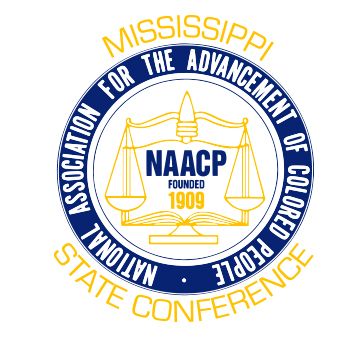The G Word: Gentrification and Its Many Meanings
Changing neighborhoods may be a class issue, but in America, that means it’s also a racial one.
2015/5/26-Ask city-dwellers to describe what, precisely, gentrification is you’ll get an array of answers. The term is a murky one, used to describe the many different ways through which money and development enter poorer or less developed neighborhoods, changing them both economically and demographically.
For some, gentrification and gentrifiers are inherently bad—pushing out residents who are often older, poorer, and darker than the neighborhood’s new occupants. For others, a new group of inhabitants brings the possibility of things residents have long hoped for, better grocery stores, new retail, renovations, and an overall revitalization that often eludes low-income neighborhoods.
The interview below has been lightly edited for clarity.
Gillian B. White: How long have you lived in New York and was the idea for a book on gentrification based on things that you’ve seen first hand?
White: You start out in the book saying that the word “gentrification” is useless. That’s a sentiment that’s echoed by a lot of people you speak with. What do you mean by that, and is there a better way to talk about what’s happening in cities like New York?
Gibson: Yeah, I think there is a better way to talk about what’s happening in cities, and what’s happening in New York in particular. The first thing that comes to mind is what Steven Chu, the architect, said at the end of his chapter, where he commented that language evolves and land evolves as well. Of course it does. And words get really tired. They get well-tread, and ubiquitous, and diffuse, and they lose their original point of origin. So I think that we can stop leaning on that one word and try to talk about all the aspects that affect our lives when a lot of money comes to town and people are displaced, and the character of the neighborhood changes. I think it’s better to be more precise with which of those discussions we’re having.
White: What exactly, or who exactly, is a gentrifier? And do you find that people really had differing views on what that definition was?
Gibson: Yeah, for some people, it’s a totally, completely, no question about it, toxic word. So they would never assign it to someone in the neighborhood that might be new and might be very different from the existing population. They wouldn’t assign it to them because they’re nice, so it’s just for the mean people. So that happens, for sure. I don’t necessarily concur with that, but it happens quite a bit.
But then you have people like Celia Weaver at UHAB [Urban Homesteading Assistance Board], who is interviewed in the book. She talks about her work as a community organizer, but she also talks about being a twenty-something caucasian female moving into predominantly African-American neighborhood and what that feels like and how she feels inherently guilty and tries to create a social fabric and social relationships for herself in the neighborhood. So when someone becomes conscientious, I don’t think they’ll hesitate to self-identify as a gentrifier, but they want to try to recast that word, or at least change their behavior to give a good spin to it.
White: One of the things I noticed was that people were trying to separate out the idea of gentrification by race versus gentrification by class. But often those two seem like they’re somewhat interchangeable, or they get lumped together a lot. How interchangeable do you think those things are, and why do you think people were so adamant about creating that separation?
White: And to that point, I think one of the factors that was the most striking in your book, was the really blatantly racism. In one section, Ephraim, a landlord in Brooklyn, says, “If it’s white tenants only, it’s clean. I know it’s a little bit racist but it’s not. They’re the ones that are paying and I have to give them what they want. Or I’m not going to get the tenants and the money is not going to be what it is.” It was one of those things that I think many people feel is true, but seeing the admission is still surprising. How pervasive was that strain of thought in your interviews?
Gibson: Unfortunately, I could’ve put a lot more individuals in the book that expressed bigotry in one form or another. It’s pervasive enough to be an ingredient in what’s going on.
There are all kinds of landlords and developers. The book ends with probably one of the most benevolent landlords I’ve ever met. That said, this archetype of a malevolent landlord, who is detached in any way—in terms of social fabric—from the people who live in the buildings that he or she may own, or it may own, that is very pervasive.
I spoke to numerous landlords and developers who in one way or another echoed what Ephraim said. He’s in the book because he was the one who was willing to say it point-blank, and, while that’s really brutal and difficult to read, I think it’s important to have it. A lot of people sort of dance around it. There’ll be lots of hints and intonations, “We’re looking to bring ‘different’ kinds of people into the building,” and that kind of stuff. It’s a very real issue for a lot of people that are trying to find a place to work and a place to live in New York City.
White: One of your interviewees says that when it comes to the way neighborhoods are changing, everyone has a chance to participate in some way or another. I think a lot of times you look at gentrifiers and you look at people whose space is being gentrified. So one person is an actor and another is, in some views, more passive. Do you think that’s true? Is there a chance for everyone to participate in a positive way?
But that said, I’m a realist, and I’ve met enough people to understand that some people might fight that good fight and still get displaced.
I think we very often get wrapped up in the idea of the virtual and how we can communicate with people half the world away. And, particularly in a place like New York, we very often ignore the people that are living in closest proximity to us. I think if we stopped doing that it would go a long way to help some of the interpersonal angst of gentrification.
White: To what extent did you feel like developers and landlords and the realtors understood or were sympathetic to the people that had been living in these neighborhoods and were now seeing changes or facing being priced out?
Gibson: There’s always some nod towards sympathy. But sympathy is trumped by the desire to capitalize on the building where that person lives. Sometimes it’s genuine, and sometimes people seem conflicted in terms of really feeling some of the hurt. In some cases it just felt like a nod; it felt like rhetoric; it felt like, “Write a statement and then let’s move on with the conversation about how I’m going to make a pile of money.” It was always expressed, and it felt genuine to me only a portion of the time.
White: In one chapter you talk to a guy who had replaced cabinets in his rent-controlled apartment, and now they were threatening him with eviction. What are some of the stories you’ve heard where people were being threatened with eviction but it seemed pretty clear that what they were trying to do was get people out so they could renovate and raise rents?
Gibson: There are so many different stories. Another one that I touched on briefly was Nefertiti, she lived with her mother since she was 19, but they never put her on the lease. And, while that might not have been prudent on their part, certainly no grounds for her to be evicted. She brought in all the neighbors, the caretakers, so many human beings to confirm that she’d been living there for years and years. And the best she could do was talk the judge into not evicting her but making her accept a gigantic rent increase.
White: Did you find that there was a different response to attempts to move into a neighborhood from major universities, such as Columbia or NYU, versus when it’s just an individual landlord buying a building?
Gibson: The thing with the universities is that they become so dominant in the neighborhood and a lot of people have strong reactions to that. I think it’s worth really highlighting the difference between Columbia and NYU—two large higher-education institutions that have done massive development projects in New York City over the last couple of decades. But they’ve done them very very differently. Columbia, their vision for development is to treat these fortified campuses as these fortresses you can only get into with a pass.
White: The whole “Ivory Tower” thing.
Gibson: Exactly. You have high walls all around, and you have all kinds of stuff going on under ground in terms of infrastructure and maintenance, so that stuff doesn’t have interact with students above.
Columbia’s model is very different than when we talked to Andrew Ross and Steven Chu and a few other people who talk about NYU, and it’s almost the polar opposite approach of becoming a part of the neighborhood—building throughout the neighborhood.
And I think that’s actually the better choice. The best thing you can do is have the university be a part of the city, be a part of the community. And that’s never going to really happen with the Columbia model. The problem is when the development just feels like it’s on steroids, and it just feels like it’s taking over block after block. And I think that it’s the volume, and it’s the overbearing nature and the really relentless nature of NYU’s development that I think riles people most.
Gibson: It’s so tricky. Is that a terrible thing that people went out bought stuff and maybe ended up moving out there? I don’t think it actually is. But it is a troubling intention, I’ll just say that. And I guess we need to decide whether we care more about the intention or the outcome. When your only intention is to make sure you’re creating a road map so that you can extract as much capital as you can out of a neighborhood, and that’s your primary intention, I don’t like that. I don’t think that intention is going to serve that neighborhood well in the long run. It might help drive economically, but not all those other categories. It’s a really tricky thing. And I still sort of wrestle with my own point of view on it, but I think it comes down to whether you prioritize intentions or outcomes.
White: Was there anything during your conversations with people that you found surprising about their reactions to the changing state of their neighborhoods or their buildings?
Gibson: I was trying to get a beat on how all of the development and change in New York City affects the homeless population, and I talked to a person namedMatt who had been homeless himself and has got himself on his feet and now is director of operations at the Bowery Mission, which has been serving the homeless population for around a hundred years. The Bowery Mission tried to buy the building next to them from the Salvation Army several years ago, and they made an offer. The Salvation Army said no and ended up selling that building just a couple of years later to the Ace Hotel chain for at least $30 million.
I went there expecting Matt to tell me about the crisis and how all the money was coming in and this was inhibiting their ability to do work. And, in fact, I think it is inhibiting their work. But he was very positive about all the change. He’s very happy there’s a Whole Foods down the block. He’s very happy there’s a fancy, new, modern museum right next door to the Bowery Mission. They’ve given a few internships to the homeless men that live at the Bowery. And he’s happy about the hotel, at least at the point at which I spoke to him. It’ll be interesting to see how it plays out. But he feels like they’re in good faith keeping them in the loop of the development, and they want to find ways to work with them, maybe employ some of the men who live at the Mission. And I think those are great intentions, and I hope they come to fruition. Matt’s perspective really surprised me. His optimism and his willingness to accept the change I thought was admirable.
Gibson: On the one hand, this is entirely a book about New York, and on the other hand, it’s not at all. What I mean by that is gentrification changes—building to building, block to block, and city to city—depending on how someone defines that and depending on the dynamics in the neighborhood. There are scenes and dynamics that I think so many urban environments are subjected to.
Chiefly, it’s the flow of global capital. The money coming into New York City is not exclusively coming from New York City. In fact, in large measure it’s not coming from New York City, it’s coming from hedge funds based in Dubai or Shanghai or London or wherever they’re based. So many urban centers, like New York and Sao Paulo and Berlin, are subjected to the flow of global capital. And it’s a very dangerous game because the second this capital decides it wants to move on, it’ll move on. And that’s not a good thing for the long run.
In the short term, what it means is that if you’re a family looking for a home in New York and you go looking at brownstones out in the farther reaches of Brooklyn, you’re not competing against other families looking for a home, you’re competing against hedge funds—and that’s a whole different ballgame. I think that that’s really the central issue and the central problem of gentrification, and I think that’s what we need to get at and start to solve on a policy level.
Source: The Atlantic



